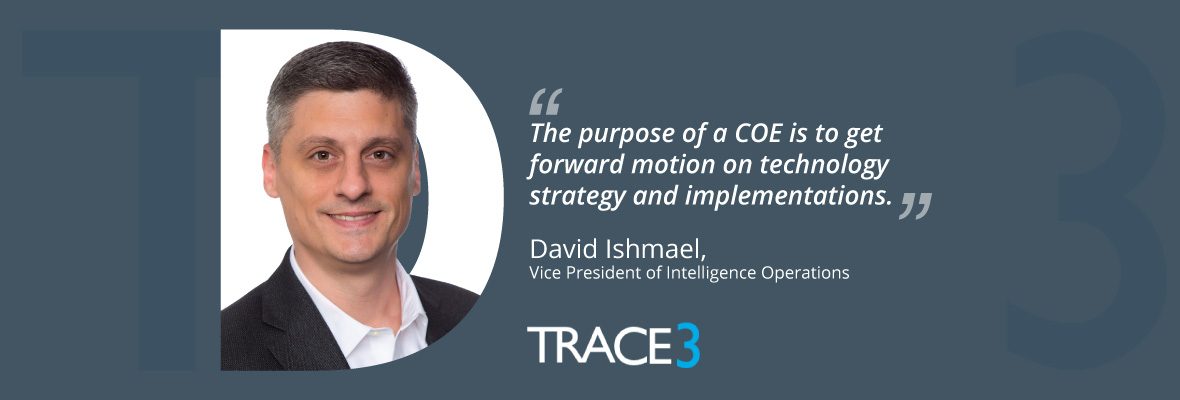David Ishmael is Vice President of Intelligence Operations at Trace3, an IT services firm specializing in infrastructure operations and data intelligence. Previously, David held roles as CTO, director of IT, enterprise architect, and network engineer at various high-tech firms. Trace3 is an OpsRamp VAR partner.
OpsRamp: What challenges are your customers facing right now?
DI: This year’s been tough with the pandemic and many organizations are struggling to do more with less. Budgets got slashed. In some cases, team members took on more responsibility after there were layoffs. In these trying times, technology must be a force multiplier and be able to increase productivity and efficiency. Leaders need to ensure that their organization is maximizing the value from technology and replacing those tools which no longer provide value. Shifts in organizational culture as a result of remote workforces will also need to be addressed alongside scrutinizing existing technology investments.
OpsRamp: Making these decisions isn’t easy. How can a Center of Excellence assist?
DI: The purpose of a COE is to get forward motion on technology strategy and implementations. It comes down to recommending technology standards, establishing performance indicators, best practices, and optimizing business processes. This is critical for successfully adopting new technologies long term in an organization. A dream without a plan is just a wish. The COE facilitates that plan by providing a roadmap for adoption, the milestones for incremental value, and gives you the tools to measure success. The goal is to be smart about your organization’s investments; you don’t want to buy something that ultimately ends up as shelf-ware.
A COE is often involved with major organizational changes that impact the way in which a business operates, such as selecting a new technology or process improvements. Here, the COE will establish a plan to include adoption using success metrics and KPIs that will be used during evaluation, selection, deployment, and operation.”
OpsRamp: Whom should be involved in a COE and how do they work?
DI: You need decision-makers, managing directors and above, from the different lines of business. New technology involves culture changes and new standards, and it can be very disruptive. You also want to include influencers such as senior managers who have field experience and know how changes will impact the business or morale. Having said that, if you have individuals who are too high in the organization then things don’t get done, but if members are too low, people don’t have decision-making authority. Ideally you will have individuals who are somewhere in the middle – they can make decisions, but they also understand the value of the product. A COE is often involved with major organizational changes that impact the way in which a business operates, such as selecting a new technology or process improvements. Here, the COE will establish a plan to include adoption using success metrics and KPIs that will be used during evaluation, selection, deployment, and operation.
OpsRamp: Should COEs be set up for individual projects?
DI: They could be project-oriented, but organizations will get more value from one that is sustainable and long term. The people on the team get savvy about the business and how to address potential disruption. You learn and bring that to the next project. It’s ideal to have a core group and then bring in SMEs as needed for individual projects.
OpsRamp: Are there particular tools and processes that are useful to a COE?
DI: Most customers leverage common project management tools. When you get into discussions around service level agreements, it’s helpful to have someone with an ITIL background. I often hear about conflicts between Agile and ITIL, but these do not need to be mutually exclusive. For instance, an organization may leverage an ITIL service desk that is customer facing but individual teams may use Kanban boards for Agile development. Most organizations implement ITIL at a macro level where Waterfall project management approaches provide clear start and stop boundaries and Agile is applied at the micro level to allow for quick iterative cycles that promote adaptability.
OpsRamp: What are some common COE conflicts?
DI: The biggest issue with COEs is around culture. It’s the hardest thing to change. I was working with a customer’s new IT director. He relayed how he walked into the NOC and all the screens were full of red and the staff was just hanging out, drinking coffee. Nobody was taking action. He was baffled. The team had become desensitized to the alerts to the point where it was normal to see red. He implemented a product such as OpsRamp to simplify and reduce alert noise, but he had to change the culture, which is a big shift. It takes executive buy-in, time, and education.






